#lidar exploration program
Explore tagged Tumblr posts
Text
First episode of my playthrough series of LiDAR Exploration program.
New video every 3 days ❤️
youtube
#lidar exploration program#Lidar game#youtube#psychological thriller#indie games#small creator#Scanner sombre#lidar technology#lidar#game playthrough#steam games#Youtube
8 notes
·
View notes
Text
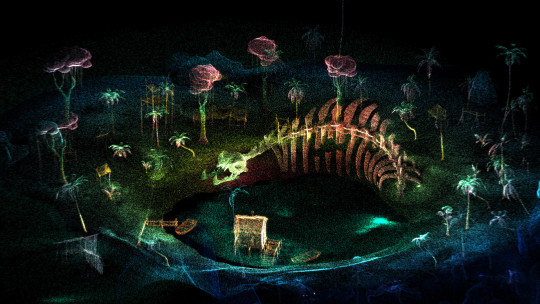
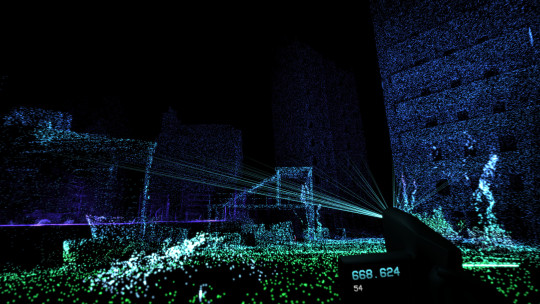
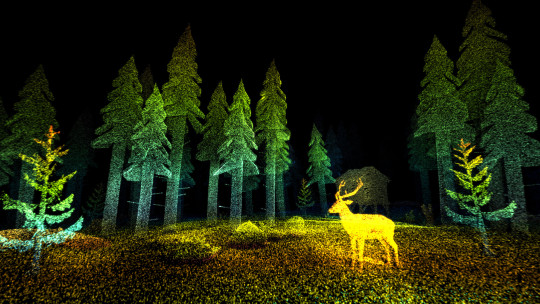
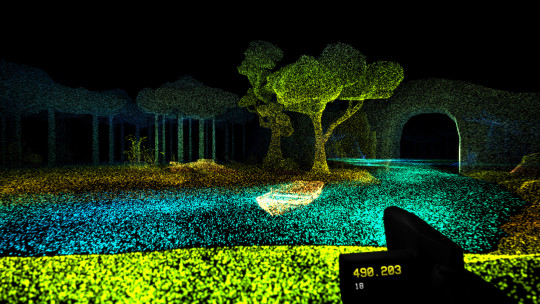
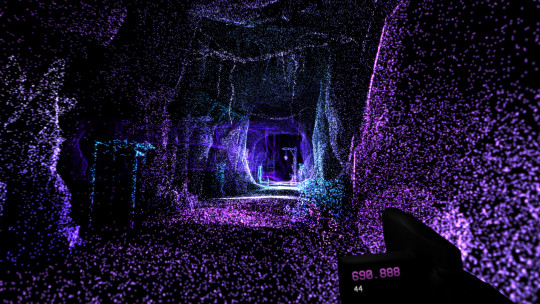
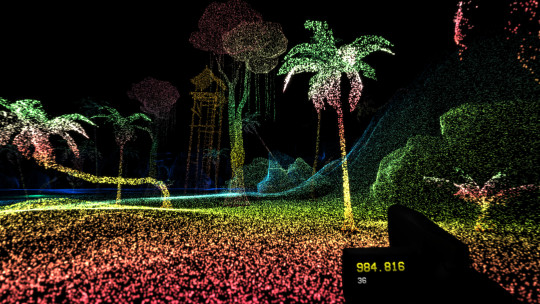
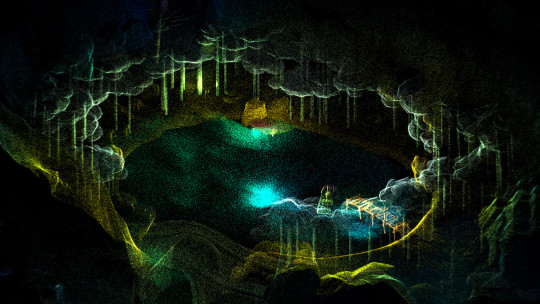
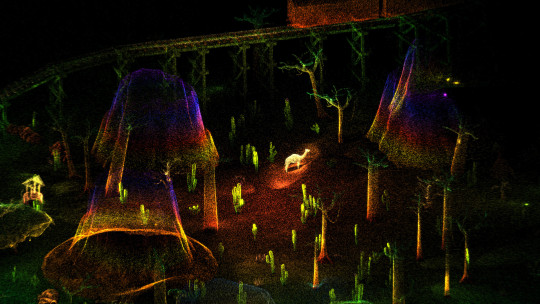

LiDAR Exploration Program
2 notes
·
View notes
Photo



LiDAR Exploration Program
✰ More indie games you may have missed:
IndieGameLover @ Youtube
indiegamelover.com
#Indie Games#Gaming#Aesthetic#Art#PC Games#Video Games#Indie Gaming#PC Gaming#Games#GIFs#Indie Game Lover#iglLiDARExplorationProgram
13 notes
·
View notes
Text
LiDAR Exploration Program (a video game by KenForest)




Solid exploration game with a fantastic aesthetic. Is well designed around its LiDAR mechanic. Thought it would go a little harder into horror, but I still enjoyed it quite a bit.
7 notes
·
View notes
Text
twitch_live
Let's explore more of the world of LiDAR Exploration Program!
2 notes
·
View notes
Link
A mentor of research scientist Meloë Kacenelenbogen once shared a sentiment from French author André Gide: “You cannot discover new oceans unless you have the courage to lose sight of the shore.” Kacenelenbogen pushes beyond her comfort zone to explore the unknown. Name: Meloë S. KacenelenbogenFormal Job Classification: Research scientistOrganization: Climate and Radiation Laboratory, Science Directorate (Code 613) Dr. Meloë S. Kacenelenbogen is a research scientist at NASA’s Goddard Space Flight Center in Greenbelt, Md. She studies the impact of aerosols on air quality and the Earth’s climate.Photo courtesy of Meloë Kacenelenbogen What do you do and what is most interesting about your role here at Goddard? I study the impact of aerosols — suspended particles from, for example, wildfire smoke, desert dust, urban pollution, and volcanic eruptions — on air quality and the Earth’s climate. I use space, air, and ground-based observations, as well as models. Why did you become a scientist? What is your educational background? I never made a deliberate choice to become a scientist. I started with very little confidence as a child and then built up my confidence by achieving things I thought I could not do. I chose the hardest fields to work on along the way. Science looked hard and so did fluid mechanics, remote sensing, and atmospheric physics. I have failed many times, but I always learn something and move on. I do get scared and maybe even paralyzed for a day or two, but I never let fear or failure immobilize me for long. I was born in Maryland, but my family moved to France when I was young, so I am fluent in French. I have a bachelor’s and master’s degree in mechanical engineering, and physical methods in remote sensing from the Université Pierre et Marie Curie (Paris VI, Jussieu). In 2008, I got a Ph.D. in atmospheric physics for applying satellite remote sensing to air quality at the Université des Sciences et Technologies de Lille (USTL), France. What are some of your career highlights? After my Ph.D., I worked for the Atmospheric Lidar Group at the University of Maryland, Baltimore County (UMBC), on spaceborne and ground-based lidars. In 2009, I got a NASA Post-doctoral Program (NPP) fellowship at the agency’s Ames Research Center in California’s Silicon Valley, where I worked for 13 years on space-based, aircraft-based, and ground-based atmospheric aerosol vertical distribution and aerosol typing. In 2022, I came to work at the Climate and Radiation Lab at Goddard. What is most interesting about aerosols? Aerosols are very topical because they have a huge impact on the air we breathe and our Earth’s climate. The smaller the aerosol, the deeper it can get into our lungs. Among other sources, aerosols can come from cars, factories, or wildfires. We all know that wildfires are becoming bigger and more frequent. They are expected to happen even more frequently in the future due to climate change. Both when I was living in California and here in Maryland, I have experienced first-hand choking from the wildfire smoke. I will always remember how apocalyptic it felt back in the summer of 2020 in California when wildfire smoke was paired with COVID confinement, and the sky turned Mars-like orange. Please tell us about your involvement with the Atmosphere Observing System (AOS)? I am incredibly lucky to be able to contribute to the next generation of NASA’s satellites. I am working on AOS, which will observe aerosols, clouds, convention, and precipitation in the Earth’s atmosphere. I am part of the team that is helping design several instruments and algorithms. My role is to connect this spaceborne observing system to all our other space, ground, and air-based measurements at the time of launch. We are making a mesh of observations to address the science questions, run the algorithms, and validate the spaceborne measurements. I am constantly pushed to expand my horizon and my own knowledge. Why do you enjoy always challenging yourself intellectually? I started that way. I had no confidence, so I felt that the only way I could build my confidence was to try doing things that scared me. I may sometimes be a little scared, but I am never bored. What did you learn from your mentors? A few years ago, a mentor shared a quote from André Gide with me that encapsulates what we are talking about: “You cannot discover new oceans unless you have the courage to lose sight of the shore.” In other words, it is OK, maybe preferable, to be out of my comfort zone to explore the unknown as scary as it may be. Along the way, it has been extremely important for me to deliberately choose mentors. To me, a good mentor has earned the respect of all who have worked with them, is uplifting, reassuring, and gives me the invaluable guidance and support that I need. I deliberately try to surround myself with the right people. I have been very, very fortunate to find incredible people to encourage me. As a mentor, what do you advise? I tell them to deliberately choose their mentors. I also tell them that it is OK to be uncomfortable. Being uncomfortable is the nature of our field. To do great things, we often need to be uncomfortable. Why do you enjoy working on a team? I love working on teams, I love to feed off the positive energy of a team whether I lead it or am part of it. In my field, teamwork with a positive energy is incredibly satisfying. Everybody feeds off everybody’s energy, we go further, are stronger, and achieve more. This may not happen often, but when it does it makes it all worth it. What are the happiest moments in your career? I am always happiest when the team publishes a paper and all our efforts, are encapsulated in that one well-wrapped and satisfying peer-reviewed paper that is then accessible to everyone online. Every paper we publish feels, to me, the same as a Ph.D. in terms of the work, pain, energy, and then, finally, satisfaction involved. What do you hope to achieve in your career? I want to have been a major contributor to the mission by the time the AOS satellites launch. What do you do for fun? I do mixed martial arts. I love the ocean, diving, and sailing. I also love going to art galleries, especially to see impressionist paintings to reconnect with my Parisian past. Meloë Kacenelenbogen once shared a sentiment from French author André Gide: “You cannot discover new oceans unless you have the courage to lose sight of the shore.”Photo courtesy of Meloë Kacenelenbogen Who is your favorite author? I love Zweig, Kafka, Dostoyevsky, Saint-Exupéry, and Kessel. The latter two wrote a lot about aviators in the early 1900s back in the days when it was new and very dangerous. Those pilots, like Mermoz, were my heroes growing up. Who would you like to thank? I would like to thank my family for being my rock. What are your guiding principles? To paraphrase Dostoevsky, everyone is responsible to all men for all men and for everything. I have a strong sense of purpose, pride, justice, and honor. This is how I try to live my life for better or for worse. By Elizabeth M. JarrellNASA’s Goddard Space Flight Center, Greenbelt, Md. Conversations With Goddard is a collection of Q&A profiles highlighting the breadth and depth of NASA’s Goddard Space Flight Center’s talented and diverse workforce. The Conversations have been published twice a month on average since May 2011. Read past editions on Goddard’s “Our People” webpage. Explore More 6 min read Christine Knudson Uses Earthly Experience to Study Martian Geology Geologist Christine Knudson works with the Curiosity rover to explore Mars — from about 250… Article 6 days ago 9 min read Systems Engineer Noosha Haghani Prepped PACE for Space Article 2 weeks ago 6 min read Astrophysicist Gioia Rau Explores Cosmic ‘Time Machines’ Article 3 weeks ago Share Details Last Updated Oct 22, 2024 EditorMadison OlsonContactRob [email protected] Space Flight Center Related TermsPeople of GoddardGoddard Space Flight CenterPeople of NASA
2 notes
·
View notes
Text
Fibre Optic Gyroscope Market Drivers: Navigating Demand Across Aerospace & Defense
The fibre optic gyroscope market is experiencing robust growth due to its critical role in high-precision navigation systems. These gyroscopes, which use the interference of light to detect changes in orientation, have emerged as key components in aerospace, marine, robotics, and defense sectors. The ability to function without moving parts makes them more reliable and durable compared to mechanical gyroscopes. As global technological advancements continue to unfold, several market drivers are contributing to the expanded application and demand for fibre optic gyroscopes.
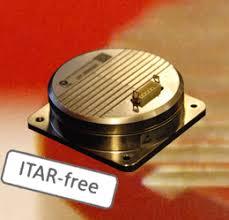
1. Rising Demand for Accurate Navigation in Defense Systems
One of the primary drivers for the fibre optic gyroscope market is its extensive use in defense and aerospace. Military operations increasingly require precise positioning and navigation, particularly in GPS-denied environments such as submarines, aircraft, or unmanned vehicles. Fibre optic gyroscopes are integrated into inertial navigation systems (INS) that operate independently of external signals. Their accuracy, reliability, and resistance to electromagnetic interference make them ideal for advanced weapon systems, guided missiles, and surveillance equipment.
With growing geopolitical tensions and increased investments in defense modernization programs, countries are focusing on strengthening their military capabilities. This has led to the rising adoption of next-generation gyroscopes across platforms such as tanks, drones, and fighter jets, significantly driving market demand.
2. Proliferation of Autonomous Vehicles and Robotics
The surge in autonomous vehicle development has introduced new opportunities for fibre optic gyroscope technology. Self-driving cars, drones, and unmanned underwater vehicles require precise motion sensing and orientation detection, especially in complex terrains and environments where GPS signals are weak or unavailable.
Fibre optic gyroscopes provide enhanced stability and control systems for these vehicles, enabling safer and more efficient navigation. Their high sensitivity and immunity to external disturbances allow them to be integrated seamlessly with AI-based systems and LiDAR technologies. As the demand for autonomous systems expands in both commercial and industrial sectors, the use of fibre optic gyroscopes is expected to see a parallel rise.
3. Advancements in Space Exploration and Satellite Technologies
The fibre optic gyroscope market is also benefitting from the resurgence in global space exploration initiatives. Satellites and spacecraft require highly reliable and precise attitude control systems, which are critical for orbit positioning and stabilization. Fibre optic gyroscopes offer the necessary durability and accuracy, making them a preferred choice for space agencies and private space enterprises.
With increasing satellite launches for communication, meteorology, and surveillance purposes, manufacturers are developing compact, lightweight gyroscopes with high performance to cater to this segment. The miniaturization of space-bound equipment further supports the adoption of advanced gyroscopic solutions.
4. Technological Advancements and Cost Reduction
Ongoing innovations in optical fiber technologies and laser sources have led to improvements in the performance of fibre optic gyroscopes. These advancements are enhancing sensitivity, reducing drift, and lowering manufacturing costs, thereby making the technology more accessible across new market verticals.
Manufacturers are increasingly developing smaller and cost-effective gyroscopes suitable for commercial UAVs, navigation systems in vehicles, and wearable technologies. The wider availability and improved scalability of such solutions are expected to drive adoption in consumer and industrial applications alike.
5. Integration with MEMS and Hybrid Sensor Technologies
Another significant driver is the integration of fibre optic gyroscopes with MEMS (Micro-Electro-Mechanical Systems) and other hybrid sensor technologies. While MEMS gyroscopes dominate the low-cost market, they often fall short in terms of precision and stability. Combining both technologies helps address performance gaps and broadens the use cases for navigation and inertial measurement systems.
This convergence allows for customized navigation solutions that are both cost-effective and precise, thereby opening doors in sectors such as agriculture, construction, mining, and even virtual reality.
6. Growing Investments in Infrastructure and Smart Systems
The global shift towards smart infrastructure and Industry 4.0 initiatives is also favoring the fibre optic gyroscope market. From intelligent transport systems to advanced surveying and mapping tools, the need for high-precision orientation data is crucial. These gyroscopes are being utilized in civil engineering applications like tunnel boring, dam construction, and seismic activity monitoring.
As urban planning evolves to incorporate smart mobility and automation, the demand for precision navigation tools like fibre optic gyroscopes will continue to rise.
Conclusion
Driven by defense needs, autonomous mobility, space exploration, and advancements in sensor technologies, the fibre optic gyroscope market is on a high-growth trajectory. These gyroscopes, known for their precision, reliability, and adaptability, are poised to revolutionize navigation and positioning applications across industries. As innovation continues and costs decline, their relevance and demand are expected to multiply, paving the way for expansive market development over the coming years.
0 notes
Text
Emerging Civil Engineering Tools: BIM, GIS, and 3D Scanning
The civil engineering industry is undergoing a digital transformation driven by advanced tools and technologies. Modern infrastructure development now relies heavily on data-driven planning, simulation, and precision execution. Tools such as Building Information Modeling (BIM), Geographic Information Systems (GIS), and 3D scanning are at the forefront of this evolution. Students pursuing the B.Tech Civil Engineering ADYPU program gain early access to these technologies, preparing them to meet the challenges of next-generation infrastructure projects. Let’s explore how these tools are reshaping the profession and why ADYPU is considered among the Best University for Civil Engineering in India.
BIM: Transforming Construction Through Digital Collaboration
Building Information Modeling (BIM) is revolutionizing how civil engineers plan, design, and construct buildings. BIM allows for the creation of intelligent 3D models that integrate architecture, structural elements, and MEP (mechanical, electrical, plumbing) systems into one unified platform. This leads to better collaboration, reduced errors, and faster decision-making.
At ADYPU, the B.Tech Civil Engineering ADYPU program incorporates BIM into its curriculum from the early semesters. Students learn how to use BIM tools like Autodesk Revit and Navisworks for real-time project coordination. As one of the Top Civil Engineering College in India, ADYPU equips students with hands-on experience in digital workflows, preparing them for modern construction environments where BIM is quickly becoming the industry standard.
GIS: Mapping Smart Infrastructure with Precision
Geographic Information Systems (GIS) are essential for urban planning, environmental monitoring, disaster management, and infrastructure development. GIS enables engineers to capture, store, analyze, and present spatial or geographic data. It helps in visualizing project sites, understanding terrain, and making informed decisions during planning stages.
The Best Civil Engineering Course in Pune, offered by ADYPU, integrates GIS training through practical labs and real-world case studies. Students learn to work with software like ArcGIS and QGIS, preparing them to manage smart cities, transportation networks, and water resource systems. With this skillset, graduates from the B.Tech Civil Engineering ADYPU program are ready to address real challenges in both rural and urban development projects.
3D Scanning: Bringing Accuracy to Site Analysis and Renovation
3D scanning technology, using LiDAR and photogrammetry, enables engineers to capture accurate dimensions of physical environments and structures in digital format. These scans are used for renovation planning, retrofitting, and structural integrity assessments. The result is greater precision, faster turnaround, and reduced human error.
Students at ADYPU gain exposure to 3D scanning technology as part of their lab work and live site visits. As a Top Civil Engineering College in India, ADYPU encourages students to explore how 3D scans can be integrated with BIM and GIS for complete digital project management. With Admissions Open – B.Tech Civil Engineering, students have the opportunity to master these emerging tools and stand out in the competitive civil engineering job market.
Future-Proof Careers in a Digitally Transformed Industry
As the civil engineering sector moves towards automation and smart technologies, professionals who are skilled in digital tools will have a distinct advantage. A career in civil engineering today requires more than just traditional knowledge—it demands expertise in BIM coordination, GIS analysis, and digital surveying.
ADYPU’s civil engineering program prepares students for this new era by offering a future-focused curriculum, expert faculty, and strong industry connections. With Admissions Open – B.Tech Civil Engineering, students can step into a transformative learning environment at the Best University for Civil Engineering. Graduates find opportunities in construction firms, infrastructure consultancies, government agencies, and research institutions worldwide.
Conclusion: Build Tomorrow’s Infrastructure with ADYPU
Emerging tools like BIM, GIS, and 3D scanning are not just enhancements—they are essential components of modern civil engineering. The B Tech Civil Engineering ADYPU program empowers students with technical excellence, digital fluency, and industry-readiness. Recognized as one of the Top Civil Engineering College in India, ADYPU is where innovation meets application. If you’re passionate about building the future, now is the perfect time to enroll. Admissions Open – B. Tech Civil Engineering — join ADYPU and become a part of India’s next generation of engineering leaders.
0 notes
Text
Beyond the Basics: Advanced Drone Technologies for Enhanced Solar Panel Inspection
The initial integration of drones into solar panel inspection revolutionized the industry, bringing unprecedented speed, safety, and efficiency. However, the world of Unmanned Aerial Vehicles (UAVs) and their associated technologies is evolving at a breathtaking pace. What was once considered cutting-edge is quickly becoming standard. For solar asset managers looking to stay ahead of the curve and unlock even greater insights into their photovoltaic (PV) assets, it's crucial to look beyond basic visual and thermal inspections and explore the advanced drone technologies enhancing solar panel drone inspection.
This deeper dive into advanced drone capabilities reveals a future where solar farm monitoring is even more precise, predictive, and autonomous.
The Evolution of Sensor Technology
While high-resolution RGB and thermal cameras remain the backbone of solar inspection, newer and more sophisticated sensors are adding layers of data granularity:
Radiometric Thermal Cameras with Higher Resolution:
Beyond basic hot/cold spots: While standard thermal cameras show temperature differences, radiometric cameras can measure the actual temperature of each pixel. Advanced versions offer significantly higher resolution, allowing for the detection of smaller, more subtle thermal anomalies indicative of micro-cracks or early-stage degradation that might be missed by lower-resolution sensors.
Precision Diagnostics: Higher thermal resolution enables more precise fault localization and better differentiation between a serious defect and a benign thermal artifact (like a reflection).
Multispectral and Hyperspectral Imaging:
Beyond visible light: These cameras capture data across many narrow spectral bands, far beyond what the human eye can see.
Vegetation Stress/Encroachment: Multispectral data is excellent for assessing the health of vegetation surrounding or encroaching on solar arrays. Identifying unhealthy or rapidly growing plant life can help predict and prevent shading issues.
Potential for Panel Material Analysis: While still emerging, future applications could involve detecting subtle changes in panel materials indicative of long-term degradation or specific manufacturing defects not apparent in visible or thermal light.
LiDAR (Light Detection and Ranging):
Precise 3D Mapping: LiDAR sensors emit laser pulses to measure distances, creating incredibly accurate 3D point clouds of the environment.
Detailed Shading Analysis: For solar farms, LiDAR can generate highly precise digital terrain models (DTMs) and digital surface models (DSMs). This allows for extremely accurate shading analysis from surrounding topography, structures, or vegetation, even predicting shading patterns throughout the year.
Volume Calculation: Useful for monitoring earthworks, assessing erosion, or even calculating the volume of vegetation requiring trimming.
Infrastructure Mapping: Provides detailed 3D models of the entire solar farm infrastructure, invaluable for planning expansions or maintenance.
Advanced Drone Capabilities and Autonomy
The drones themselves are also becoming smarter and more capable:
Increased Autonomy and Swarm Technology:
Beyond pre-programmed flights: While current drones follow programmed paths, the future involves greater real-time decision-making. Autonomous systems will be able to adapt flight paths based on live data, for example, focusing more closely on areas where initial thermal scans indicate a problem.
Swarm Robotics: Imagine multiple drones coordinating to inspect a massive solar farm simultaneously. Each drone could cover a specific section, share data, and automatically re-route if one detects a significant anomaly requiring closer inspection by another. This dramatically reduces inspection time for gigawatt-scale farms.
Docking Stations: Autonomous docking and charging stations allow drones to operate for extended periods without human intervention, automatically recharging and launching for the next mission.
Edge Computing and Real-time Analytics:
Processing on the drone: Instead of sending all raw data back to a central server for processing, some advanced drones are equipped with edge computing capabilities. This means initial AI analysis can happen onboard the drone in real-time.
Immediate Alerts: Critical issues can be identified and flagged instantly, allowing ground crews to be dispatched immediately, even before the drone lands. This minimizes downtime and allows for quicker emergency response.
Beyond Inspection: Drone-as-a-Service and Integrated Solutions:
Drone-Mounted Cleaning: While not widespread, research is ongoing into drones capable of performing light cleaning of individual soiled panels, especially those difficult to access.
Automated Data Pipelines: Seamless integration of drone data directly into existing O&M (Operations & Maintenance) software, enterprise asset management (EAM) systems, and SCADA (Supervisory Control and Data Acquisition) systems, creating a unified digital twin of the solar farm.
Predictive Maintenance Ecosystems: Drone data, combined with historical performance data, weather forecasts, and grid demand, feeds into sophisticated predictive maintenance models. These models don't just tell you what's wrong now, but what will be wrong and when, allowing for highly optimized, just-in-time maintenance.
The Future of Solar Maintenance is Intelligent and Integrated
The trajectory of solar panel drone inspection is clear: towards greater intelligence, autonomy, and integration. These advanced technologies are not merely incremental upgrades; they represent a fundamental shift in how solar assets are managed.
For solar asset owners and operators, embracing these innovations means:
Unrivaled Precision: Detecting issues at the earliest possible stage with granular detail.
Proactive Problem Solving: Moving beyond reactive repairs to a truly predictive maintenance strategy.
Scalability: Efficiently managing ever-larger and more complex solar farms with fewer human resources.
Enhanced ROI: Maximizing energy output, extending asset lifespan, and drastically reducing operational costs through superior insights.
The basic drone inspection is a powerful tool, but the next generation of advanced drone technologies promises to unlock unprecedented levels of efficiency, reliability, and profitability for the solar industry. Staying informed and open to these innovations will be key to harnessing the full potential of our solar future.
0 notes
Text
Explore the Development and Application of AI-Powered Robots

Artificial Intelligence (AI) has transcended its conceptual origins and found real-world expression in the form of AI-powered robots—machines that can see, think, decide, and act. From autonomous delivery drones and surgical robots to smart assistants and industrial cobots, these intelligent machines are transforming how we live, work, and interact.
At the forefront of this revolution are firms like ours—an AI development company in New York—pushing boundaries and redefining what robots can do with the power of AI. In this blog, we’ll explore the exciting development and multifaceted applications of AI-powered robots, along with the technologies driving their evolution.
Understanding AI-Powered Robots
AI-powered robots are machines that combine robotics with artificial intelligence to perform tasks that typically require human intelligence. These robots leverage AI techniques such as:
Machine Learning
Natural Language Processing (NLP)
Computer Vision
Sensor Fusion
Decision Algorithms
An AI developer in New York typically integrates these technologies to give robots the ability to perceive their environment, make decisions, and learn from experience—much like a human.
Evolution of AI Robots: From Rule-Based to Autonomous Systems
The first wave of robotics was rule-based and inflexible. These early robots could only perform tasks they were explicitly programmed for, making them suitable for repetitive jobs like welding on assembly lines.
With the rise of machine learning, robotics entered a new era. Today’s AI-powered robots can adapt to new situations, learn from human behavior, and even engage in complex decision-making. An artificial intelligence development company in New York typically builds robots that integrate cloud-based learning, real-time analytics, and sensor-driven feedback loops.
Key Components in the Development of AI Robots
Creating an AI-powered robot involves the integration of multiple disciplines. Here’s how a modern AI development company in New York approaches the process:
1. Sensing and Perception
Robots use computer vision, LIDAR, ultrasonic sensors, and thermal imaging to "see" and understand their environment. Computer vision algorithms can recognize objects, faces, gestures, and terrain.
2. Natural Language Processing (NLP)
NLP allows robots to understand and respond to human language, both written and spoken. Think of customer service bots or robotic assistants like Pepper or Sophia.
3. Machine Learning Models
Robots use ML algorithms to learn from past data and improve their performance. Whether it's recognizing speech patterns or optimizing routes in a warehouse, learning is central to autonomy.
4. Control Systems and Actuators
These translate AI-generated decisions into physical actions. For example, when a service robot decides to fetch an item, its control system sends signals to motors and joints to execute the task.
5. Edge and Cloud Computing
While some decisions are made on-board, complex processing is often outsourced to the cloud. Many AI development services in New York design hybrid systems that balance local autonomy with cloud-based intelligence.
Applications of AI-Powered Robots Across Industries
1. Healthcare
Surgical Robots: Enhance precision and reduce patient recovery time.
Companion Robots: Support elderly care with medication reminders and emotional companionship.
Sanitization Bots: Disinfect hospitals using UV light, reducing the spread of infections.
An AI development company in New York may work with healthcare providers to build HIPAA-compliant robots for telemedicine and diagnostics.
2. Retail and Hospitality
Service Robots: Greet customers, answer queries, and guide them through stores.
Inventory Robots: Scan shelves and update stock in real-time.
Room Service Robots: Deliver orders in hotels with precision and speed.
AI robots built by AI development companies in New York are already active in flagship hotels and retail outlets across Manhattan.
3. Manufacturing and Warehousing
Collaborative Robots (Cobots): Work safely alongside human workers.
Inspection Bots: Use vision systems to detect defects on the assembly line.
Logistics Bots: Navigate through warehouses to transport items efficiently.
These systems rely on AI for pathfinding, object detection, and productivity optimization.
4. Agriculture
Crop Monitoring Bots: Analyze soil conditions, water levels, and plant health.
Harvesting Robots: Pick fruit or vegetables based on ripeness detected by AI.
Drones: Spray pesticides or seed fields with precision.
The demand for agricultural robotics has led several AI development companies in New York to collaborate with agri-tech startups.
5. Public Safety and Defense
Surveillance Robots: Patrol areas and detect unusual activities.
Rescue Bots: Navigate through disaster zones to locate and rescue victims.
Explosive Ordinance Disposal (EOD) Robots: Handle hazardous materials remotely.
These use AI to process data in real-time and make life-saving decisions under pressure.
Challenges in AI Robotics Development
Even the best AI development companies in New York face hurdles in the creation of reliable AI robots:
Ethical Concerns: Autonomous decision-making must be aligned with human values and legal frameworks.
Hardware Constraints: Power consumption, battery life, and physical durability limit design options.
Data Privacy: Robots that gather and process data (especially personal data) must comply with strict privacy laws.
Cost of Development: Building intelligent robots requires significant investment in both hardware and software.
Overcoming these requires not just technical expertise but also cross-functional collaboration, an area where a seasoned artificial intelligence development company in New York truly adds value.
The Role of AI Development Services in New York
AI-powered robots aren’t built in a vacuum. They rely on strong partnerships and innovative ecosystems. Here's how AI development services in New York contribute:
Prototype to Production: Transforming concepts into fully functional robotic solutions.
Custom AI Integration: Developing tailored algorithms for niche use-cases.
Cloud Infrastructure: Integrating AWS, Azure, or GCP for real-time data processing.
Continuous Learning: Training robots to improve through user interaction and feedback.
As one of the most tech-forward cities in the world, New York is home to some of the most dynamic AI development companies—each playing a crucial role in shaping the future of robotics.
What the Future Holds
The future of AI-powered robotics is full of promise:
Emotionally Intelligent Robots: Capable of interpreting and responding to human emotions.
Self-Healing Bots: Systems that can diagnose and repair their own issues.
Swarm Robotics: Coordinated fleets of mini robots working as one intelligent system.
Fully Autonomous Vehicles: Merging robotics with transport, transforming logistics and commuting.
Leading AI developers in New York are already experimenting with many of these concepts, pushing boundaries and exploring new frontiers.
Final Thoughts
AI-powered robots are no longer the stuff of science fiction. They’re active participants in modern industries—from healthcare and hospitality to manufacturing and public safety. As these systems become smarter and more autonomous, they will transform how businesses operate and how we live our daily lives.
For companies looking to embrace this transformative wave, choosing the right technology partner is crucial. As a trusted AI development company in New York, we help clients conceptualize, build, and scale AI-powered robots that deliver real-world impact.
Whether you’re exploring automation for your warehouse, robotic assistants for your healthcare facility, or AI bots for smart city initiatives—we’re here to help bring your vision to life.
Lear more https://winklix.wixsite.com/winklix/single-post/how-small-businesses-can-leverage-ai-for-growth
#ai development company in new york#ai developer in new york#artificial intelligence development company in new york#ai development services in new york#ai development companies in new york#Explore the Development and Application of AI-Powered Robots
0 notes
Text

The concept of autonomous vehicles is no longer a futuristic dream—it is rapidly becoming a tangible part of the future of transportation. With advancements in artificial intelligence, sensors, and data analytics, self-driving cars are reshaping the way we think about commuting, logistics, and urban planning. This blog explores how autonomous vehicles are transforming the transportation landscape and what it means for society at large. What Are Autonomous Vehicles? Autonomous vehicles are cars or other transport systems capable of navigating and driving themselves without human input. These vehicles use a combination of technologies such as LiDAR, radar, cameras, GPS, and AI algorithms to detect surroundings, interpret traffic conditions, and make driving decisions in real time. Levels of Autonomy The Society of Automotive Engineers (SAE) has classified autonomous driving into six levels: Level 0: No automation; the driver controls everything. Level 1: Driver assistance like adaptive cruise control or lane keeping. Level 2: Partial automation with simultaneous steering and acceleration/deceleration. Level 3: Conditional automation; car handles tasks but requires human intervention when prompted. Level 4: High automation; vehicle can perform all driving tasks in certain conditions. Level 5: Full automation; no driver needed at all.
Benefits of Autonomous Vehicles Integrating self-driving cars into modern transportation systems promises numerous advantages: Reduced traffic accidents: Most road accidents are caused by human error. Autonomous vehicles can help minimize collisions through precise and consistent decision-making. Improved traffic flow: AVs can communicate with each other to optimize routes and reduce congestion. Increased mobility: Autonomous vehicles offer mobility solutions for the elderly, disabled, and others who cannot drive. Energy efficiency: AVs can be programmed to drive more efficiently, reducing fuel consumption and emissions. Economic productivity: Commuters can use travel time for work or leisure, increasing overall productivity.
READ MORE
0 notes
Note
omg i think we have a similar taste in games! i love subnautica and i saw you also post about hollow knight, which is one of my favourite games! what other games do you like? or maybe you know any games similar to subnautica? i have nothing to play recently :(
ohh nice!!! i have a few games i like and most of them i have 100% on steam but. favourite games in no order. not counting hollowknight or subnautica since u know them already !! with ingame screenshots bc i love overexplaining and gtrying to sell my games to ppl as much as i can
games i 100% . bc i wanna brag:
slime rancher - u probably know it bc it pops up as similar to subnautica bc you run around gather resources but you dont scan shit and farm slimes and i love ittttt
we love katamari - um . roll around get stuff stuck to your ball <3
donut county - its like the shitty app ads you get where youre a hole in the ground and get stuff in you but this is . an actually great game with a cool story cool characters and really enjoyable !!!! its not very long either . and you play as a racoon controlling a hole

co-open - youre a kid on their first trip to the supermarket and its super cute and cozy and theres Secrets and you can pet and feed cats . also ukrainian? i think? bc it has various eastern european items in the store and the name for pierogi is vareniki which is ukrainian . also queer and everyone has a pronoun badge and the two charateres are called kicks and socks and i love them both



pony island - kinda. horror-y? youre at an arcade and one of the games is corrupted/collects souls and youre trying to rescue the souls stuck within . its mostly puzzle with some platforming but its really nice and also prretty short



kinitopet - horror game that i love so much its like a digital pet for your pc and you play "on" your pc bc it gets access to the wallpaper and steam friends and then it . creates a beautiful world for you with love and just wants to be your friend and its stylised as like late 90s internet stuff . please play it please please its one of my favourite games everrrrrrr genuinely .


papers, please - u probably know it . youre checking documents and theres multiple endings and its . autism the game you have to check everythingggg
krypta fm - very short. like 40mins polish game so i recommend it if ur polish cuz the vibeeeeee holy shit . its also in english and also super enjoyable youre a photographer and theres a cryptid in your small town and you have to help solve it


bugsnax - kinda similar to subnautica? you run around and scan stuff but also the animals are snacks and you can feed them to the characters to change how they look . and its fun and you have to kinda solve a mystery of a character that got lost
dredge - scary fishing game with lore and stuff . really fun and relaxing and has an extremely cool story and graphics !!


other games i looove but missing achievements:
lidar exploration program - idk if anyone remembers scanner sombre. but this is very similar basically youre dropped into a pitch black level and only dots made by your scanner shows you wahts around . and you have to scan a few weird things in each level and theres also hidden animals you can find


penko park - umm . youre in a railcart and riding through a park . and have to take good quality pics of the inhabitants and theyre fun and cute the only reason i dont have it 100% is bc theres one achievemtn thats completely dependent on luck . so



house flipper - dunno man i have a shitton of hours you get houses you clean houses you furnish houses you sell houses
ori and the will of the wisps - really close to hollowknight !!! but youre a little guy . theres also ori and the blind forest but i muchh prefer will of the wisps bc of the combat and in general


cult of the lamb - cute cultistssss in a forest !!! kinda base managment kinda rougelike i need to play it again so badddd but they patched up a bug my boyfriend used to get a hard ahcievement before i got it and i got pissed off and stopped playing </3


journey to the savage planet - MOST LIKE SUBNAUTICA !!!!! <- just to answer your question . ive played many "oh this is like subnautca" games and this one was genuinely theeee most like subnautica . youre stranded on an alien plannet bc your employer the Corporation wants to study if its useful. and you have a scanner and have to scan shit and gather information and there are aliens there?? theres a big tower??? the planet was supposed to be empty??? wo-oah . issues ! and the final boss is a massive slop of . something . various "stages" of the world and you have to gather materials to upgrade your gear and the computer that talks to you is a bitchy asshole <3 but its much less serious . and in the beginning you get a "are you sane after the journey" quiz and if you select that a dog picture is most like you instead of grunting like a human you pant like a dog when u run out of stamina


chants of sennaar - linguistic puzzle game. i love it . you have to walk around search for symbols to translate the languages there are and then you have to make all of the people talk to each other translate from one language to another and its soooo good i dont have it officially 100% cuz i did . on a torrent . and the save transferred when i bought it on steam but the achievements didnt. also it was made by two people and the graphics are amazingggg



1 note
·
View note
Text
Experience the Future with iPhone 16 Pro Max in Desert Titanium – 256GB

Step into a new era of mobile technology with the groundbreaking iPhone 16 Pro Max, now available in the exquisite and sophisticated Desert Titanium finish. Apple’s most powerful iPhone to date, this model is precision-engineered with aerospace-grade titanium—delivering unparalleled strength, exceptional durability, and a remarkably lightweight feel that redefines premium craftsmanship. Every curve and contour of the iPhone 16 Pro Max speaks of precision and elegance, while the matte Desert Titanium tone adds a bold, refined character. At its core lies the A18 Pro chip, built on Apple’s revolutionary 3nm architecture, providing industry-leading performance, machine learning capabilities, and energy efficiency. Whether you're juggling demanding professional workflows, streaming 4K HDR content, or gaming with high frame rates, the iPhone 16 Pro Max effortlessly delivers a smooth, responsive, and powerful experience.
The stunning 6.9-inch Super Retina XDR display with ProMotion 120Hz refresh rate provides ultra-fluid visuals, lifelike color, and peak brightness even in direct sunlight—making everything from photo editing to watching movies incredibly immersive. But what truly sets this iPhone apart is its advanced quad-camera Pro system, headlined by a 48MP main sensor, ultra-wide lens, 5x telephoto zoom, and LiDAR scanner for depth mapping. Enhanced low-light performance, cinematic 8K video recording, and real-time editing tools empower creators and casual users alike to shoot studio-quality content anytime, anywhere. The 256GB internal storage ensures you’ll never run out of room for your RAW images, cinematic videos, high-end apps, or expansive game libraries. The addition of USB-C connectivity makes transferring files and charging faster and more efficient, while support for Wi-Fi 6E and 5G ensures blazing-fast connectivity wherever you go. The iPhone 16 Pro Max also introduces next-gen AI features in iOS 18, designed to adapt intuitively to your needs—whether it’s personalizing your experience, organizing your life, or enhancing productivity. And with on-device intelligence and Apple’s industry-leading privacy features, your data stays yours—secure, private, and protected.
Why Buy iPhone 16 Pro Max from Imagine Store
Choosing the iPhone 16 Pro Max Desert Titanium 256GB from Imagine Store means you’re not just upgrading your phone—you’re stepping into the complete Apple experience with the trust and convenience that only an Apple Premium Reseller can offer. Imagine Store guarantees 100% genuine Apple products, sourced directly from Apple, along with full product warranties and official support. Our Apple-trained professionals are here to assist every step of the way—whether you're exploring models, comparing configurations, or looking for expert recommendations based on your needs. We offer a seamless shopping experience both online and in-store, with easy EMI options, zero-cost finance, instant cashback offers, and exchange programs that let you trade in your old devices for value towards your new iPhone 16 Pro Max. It’s the smart way to upgrade without compromising on budget or benefits.
What sets Imagine Store apart is the post-purchase experience. You’ll receive personalized device setup, data migration support, and hands-on demos to help you get started with your new iPhone effortlessly. Our team also helps you unlock the full ecosystem—pairing your iPhone with AirPods, Apple Watch, iCloud, MagSafe accessories, and more—so you can make the most of every Apple innovation. Plus, with a nationwide network of retail stores and service centers, you’ll always have access to fast, priority assistance and expert care, no matter where you are in India. We understand that owning a premium device deserves a premium experience—and that’s exactly what we deliver. From fast delivery to exclusive product launches, in-store workshops, and dedicated customer service, Imagine Store makes Apple ownership feel intuitive, secure, and rewarding. Don’t just buy a phone—own the future with the iPhone 16 Pro Max Desert Titanium 256GB, available now at Imagine Store with the best deals, expert support, and unmatched peace of mind.
0 notes
Text
How Autonomous Vehicles are Shaping the Future of Transportation

How Autonomous Vehicles are Shaping the Future of Transportation
The concept of autonomous vehicles is no longer a futuristic dream—it is rapidly becoming a tangible part of the future of transportation. With advancements in artificial intelligence, sensors, and data analytics, self-driving cars are reshaping the way we think about commuting, logistics, and urban planning. This blog explores how autonomous vehicles are transforming the transportation landscape and what it means for society at large.
What Are Autonomous Vehicles?
Autonomous vehicles are cars or other transport systems capable of navigating and driving themselves without human input. These vehicles use a combination of technologies such as LiDAR, radar, cameras, GPS, and AI algorithms to detect surroundings, interpret traffic conditions, and make driving decisions in real time.
Levels of Autonomy
The Society of Automotive Engineers (SAE) has classified autonomous driving into six levels:
Level 0: No automation; the driver controls everything.
Level 1: Driver assistance like adaptive cruise control or lane keeping.
Level 2: Partial automation with simultaneous steering and acceleration/deceleration.
Level 3: Conditional automation; car handles tasks but requires human intervention when prompted.
Level 4: High automation; vehicle can perform all driving tasks in certain conditions.
Level 5: Full automation; no driver needed at all.
Benefits of Autonomous Vehicles
Integrating self-driving cars into modern transportation systems promises numerous advantages:
Reduced traffic accidents: Most road accidents are caused by human error. Autonomous vehicles can help minimize collisions through precise and consistent decision-making.
Improved traffic flow: AVs can communicate with each other to optimize routes and reduce congestion.
Increased mobility: Autonomous vehicles offer mobility solutions for the elderly, disabled, and others who cannot drive.
Energy efficiency: AVs can be programmed to drive more efficiently, reducing fuel consumption and emissions.
Economic productivity: Commuters can use travel time for work or leisure, increasing overall productivity.
to know more visit..
https://themotorpedia.com/blog/how-autonomous-vehicles-are-shaping-the-future-of-transportation/f1108ded9a2aa8dc830b22ff909b0a0e
0 notes
Text



Played the demo for LiDAR Exploration Program (by kenforest), but only needed to play the first section - I already know I'm getting this day one. So damn pretty. https://kenforest.itch.io/lidar-exploration-program
5 notes
·
View notes
Text
Schedule for the week of the 15th thru the 21st
Due to work schedule changes, we're going to play a little round robin with streams for a bit
Mon/Tues: Off
Wed: Raft with Hubworld 5pm
Thurs: Thousand Arms Thursday! 6pm
Fri: Off
Sat: Spooky Saturdays is back with LiDAR Exploration Program 6pm
This is subject to change depending on how my schedule changes.
See you Wednesday!
1 note
·
View note